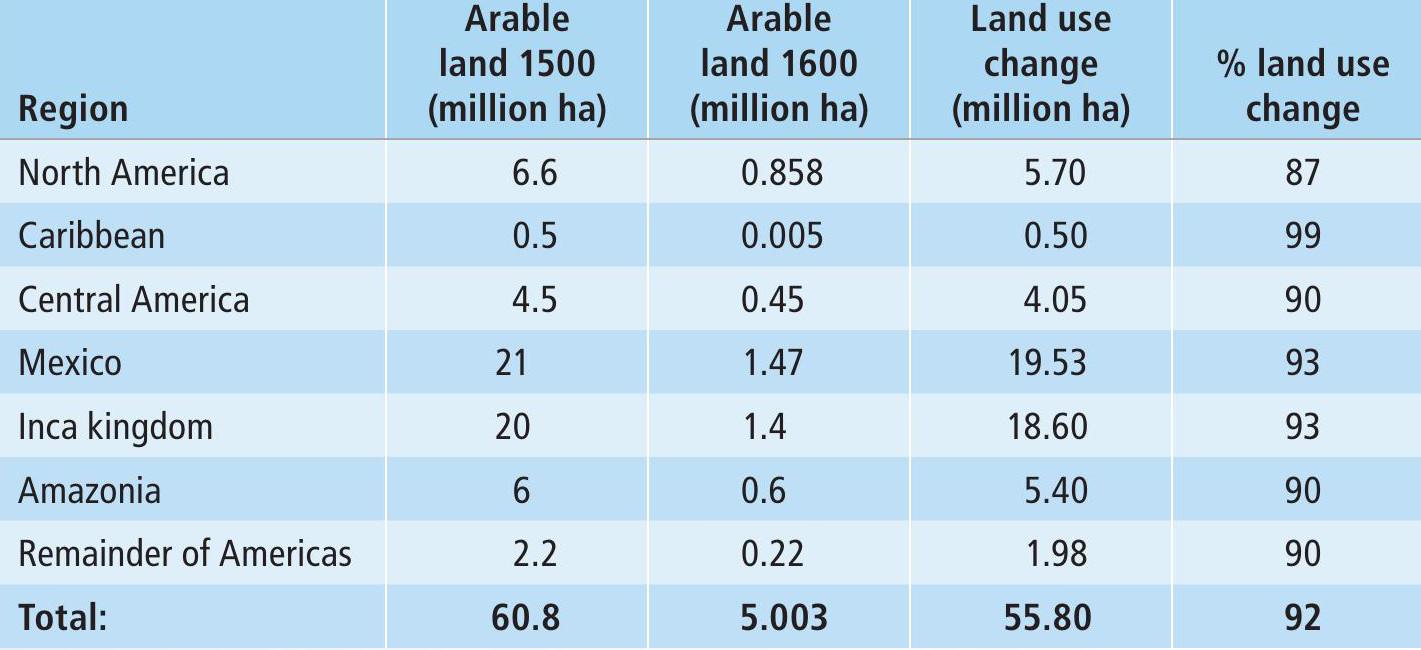
We often hear about the impact which anthropogenic emissions of greenhouse gases are having on the global carbon cycle, and consequently on the Earth’s climate. Yet there are many other ways in which humans can have an impact on the carbon cycle. In the hundred years or so after Christopher Columbus arrived in the Americas, it has been estimated that 55 million people — around 90% of the Indigenous Peoples — died as a result of epidemics of diseases such as smallpox, measles, influenza, bubonic plague, malaria, diphtheria, typhus and cholera. The diseases were particularly lethal for people already facing warfare, enslavement and famine.
Researchers have proposed a link between this ‘Great Dying’ and the global carbon cycle in the two centuries before the Industrial Revolution, suggesting that it contributed to the coldest part of the Little Ice Age.
Your organisation does not have access to this article.
Sign up today to give your students the edge they need to achieve their best grades with subject expertise
Subscribe




